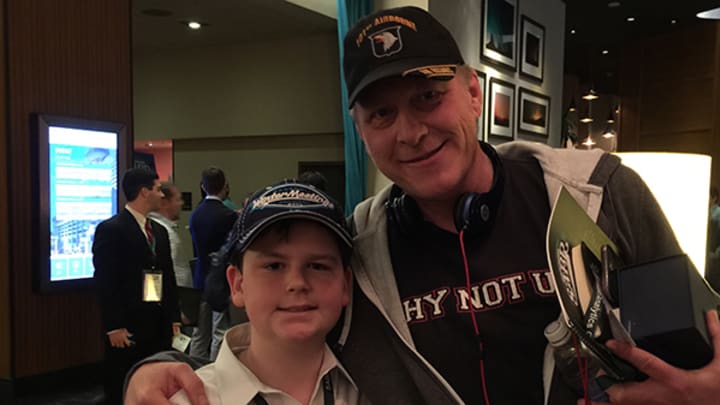Recapping Day 1 at the 2015 SABR Analytics Conference

The 2015 SABR Analytics Conference started off with a bang. If you have kept track of baseball this winter, one question you have probably heard asked many times is: Will Philadelphia Phillies ace pitcher Cole Hamels get traded? SABR President Vince Gennaro decided to take this question a step further by posing it at this years' Diamond Dollar$ Case Competition.
Undergraduate and graduate teams from colleges such as NYU, Tufts University, Pepperdine University, Stanford University, Syracuse University, and Arizona State University were among 21 groups that competed in this year's competition. They were asked to come up with two ideal trade scenarios involving Hamels. The deals chosen had to benefit both teams.
Many teams used different strategies to prove their points. For example, Syracuse created a new statistic that they called sWAR that takes a player's WAR (wins above replacement) to a new level. The stat determines the number of wins a player could add to a team over a replacement player five years down the road, which would ensure that the player would add value to the team over many years. The teams also looked at how many additional wins Hamels would contribute to a team this season.
The first deal the Syracuse team analyzed was Mookie Betts, Henry Owens, Blake Swihart, and Matt Barnes going to the Phillies, and Hamels and Ben Lively going to the Red Sox. The second trade was Corey Seager, Julio Urias, Chris Anderson, and Austin Barnes going to the Phillies, and Hamels and $10 million going back to the Dodgers.
Stanford instead looked at it by calculating how much a team's percentage chance of making the playoffs would be boosted by adding Hamels. Their first trade was Hamels and Darin Ruf going to the Mariners for a package of minor league prospects: KetelMarte, DJ Peterson, Patrick Kivlehan, Edwin Diaz, and Taijuan Walker. Their second scenario featured Hamels and Ben Revere going to the Yankees for DidiGregorious, Greg Bird, Gary Sanchez, Robert Refsnyder, and Jacob Lindgren.
Stanford wound up winning in the undergraduate category. But the teams showed how Hamels would be a good trade piece since he could be moved for start prospects who could be used for years in the future.
The excitement continued with the first panel of the day: a player panel featuring Curt Schilling, John Kruk, and Doug Glanville. A large chunk of the panel featured the panelists discussing the new pace of play rules instituted by MLB — and the analysts had very different opinions on this.
Schilling said that he is not at all a fan of the new rules. He admired baseball because it was the only sport that didn’t have a clock, and it gave you time to slow down and enjoy it. On the other hand, Kruk said that because hitters would frequently stall by walking around the batter's box, he was glad that MLB was finally doing something about it. Glanville added that because baseball is a business, it is important to ensure that things be kept up to speed.
I was able to interview Schilling after the panel. I asked him about the difference in how sabermetrics were used throughout his major league career:
Max Mannis is a special correspondent for sikids.com and a member of SABR. Check out his contributor page to catch up with his past stories on baseball and SABR events.

